ART, DESIGN AND THE WISDOM OF MILTON GLASER
Two days ago I was checking my FineArt America newsletter and I came across an interesting topic, that stemmed from a popular blog by a prolific and super talented Graphic Designer Milton Glaser. He is the creator of more than 300 posters for clients in the areas of publishing, music, theater, film, institutional and civic enterprise, as well as those for commercial products and services.
 In the Article that I read – that actually was a talk he has given quite a while ago – Mr. Glaser touches interesting subjects that no one talks about. The everyday search for work, the effort to preserve integrity despite the pressure to earn income, the everlasting pull-push relationship between Client – Consumer – Designer. Mr. Glaser is a graphic designer. However – his insights are equally valid – probably even more so for Artists. I know – some Artists are looking down on Designers – for some inexplicable reason. How I know? I am a Designer. Has been one for all my life. But I am also an Artist . A good one too. Ultimately I am hybrid of the two. Where does the Designer end and the Artist begin?
In the Article that I read – that actually was a talk he has given quite a while ago – Mr. Glaser touches interesting subjects that no one talks about. The everyday search for work, the effort to preserve integrity despite the pressure to earn income, the everlasting pull-push relationship between Client – Consumer – Designer. Mr. Glaser is a graphic designer. However – his insights are equally valid – probably even more so for Artists. I know – some Artists are looking down on Designers – for some inexplicable reason. How I know? I am a Designer. Has been one for all my life. But I am also an Artist . A good one too. Ultimately I am hybrid of the two. Where does the Designer end and the Artist begin?
I wondered many times. Once of my Facebook connections – I saw a comment about a Designer – by a novice Artist saying: “…. He is just a trained technician – that is what designers do …” I laughed out loud. I could no believe that someone could be so narrow-minded. This made me think. What is the difference between Artists and Designers? And where is the fine line between the two – if in fact it does exist? Here is my view on this . Designers are Artists, who learn how to harness their talent and skills to the specific need of a market of a Client, who use their creativity to produce an great amount of designs. Their final result is measured by the reaction of the Client and /or their Public – and in that sense it might be geared to a specific extroverted effect. Designs can be groundbreaking, innovative, uplifting, flattering, complimentary…. Designers seldom stand and admire their own work…. They are already on the next project…. While Art is more intuitive, introspective, meditative and philosophical . Artists vision is unharnessed by their Clients wishes – rather, they are expected to provide their own criteria and aesthetic value. Designers act like aesthetic agents for their clients while Artists possess an aesthetic nucleus, which is a reflection of their own perspective on life. Their Collectors ( Clients) follow.
In general, however – Artists can learn a lot more from Designers. Designer work requires more discipline – freedom is conditional. Yet – in essence – the two professions blend in a way that leaves us asking for more. It is not an accident that the best projects in Public Art are a result of the successful amalgam of Design (Landscape Architecture) and Art or Sculpture and architecture or poster designs and contemporary painting. And if anyone wants to dig deeper through the centuries – they can go as far back as Gian Lorenzo Bernini – or his successor Michelangelo. They were both Sculptors and architectural designers. I suppose these titans of art were the harbingers of interdisciplinary practice of blending design and art seamlessly.
So – here are the 10 things Milton Glaser has learned…. My fellow Artists, are you listening? Good Designers are Artists – and good Artists are Designers. I will let ponder this on your own. I found the text below – both incisive and rather an eye opener. Here it is:
10 Things I Have Learned – The Secret of Art
Ten Things I Have Learned, Part of AIGA Talk in London, November 22, 2001
1.YOU CAN ONLY WORK FOR PEOPLE THAT YOU LIKE.
This is a curious rule and it took me a long time to learn because in fact at the beginning of my practice I felt the opposite. Professionalism required that you didn’t particularly like the people that you worked for or at least maintained an arms length relationship to them, which meant that I never had lunch with a client or saw them socially. Then some years ago I realised that the opposite was true. I discovered that all the work I had done that was meaningful and significant came out of an affectionate relationship with a client. And I am not talking about professionalism; I am talking about affection. I am talking about a client and you sharing some common ground. That in fact your view of life is someway congruent with the client, otherwise it is a bitter and hopeless struggle.
2.IF YOU HAVE A CHOICE NEVER HAVE A JOB.
One night I was sitting in my car outside Columbia University where my wife Shirley was studying Anthropology. While I was waiting I was listening to the radio and heard an interviewer ask ‘Now that you have reached 75 have you any advice for our audience about how to prepare for your old age?’ An irritated voice said ‘Why is everyone asking me about old age these days?’ I recognised the voice as John Cage. I am sure that many of you know who he was – the composer and philosopher who influenced people like Jasper Johns and Merce Cunningham as well as the music world in general. I knew him slightly and admired his contribution to our times. ‘You know, I do know how to prepare for old age’ he said. ‘Never have a job, because if you have a job someday someone will take it away from you and then you will be unprepared for your old age. For me, it has always been the same every since the age of 12. I wake up in the morning and I try to figure out how am I going to put bread on the table today? It is the same at 75, I wake up every morning and I think how am I going to put bread on the table today? I am exceedingly well prepared for my old age’ he said.
2.SOME PEOPLE ARE TOXIC AVOID THEM.
This is a subtext of number one. There was in the sixties a man named Fritz Perls who was a gestalt therapist. Gestalt therapy derives from art history, it proposes you must understand the ‘whole’ before you can understand the details. What you have to look at is the entire culture, the entire family and community and so on. Perls proposed that in all relationships people could be either toxic or nourishing towards one another. It is not necessarily true that the same person will be toxic or nourishing in every relationship, but the combination of any two people in a relationship produces toxic or nourishing consequences. And the important thing that I can tell you is that there is a test to determine whether someone is toxic or nourishing in your relationship with them. Here is the test: You have spent some time with this person, either you have a drink or go for dinner or you go to a ball game. It doesn’t matter very much but at the end of that time you observe whether you are more energised or less energised. Whether you are tired or whether you are exhilarated. If you are more tired then you have been poisoned. If you have more energy you have been nourished. The test is almost infallible and I suggest that you use it for the rest of your life.
4.PROFESSIONALISM IS NOT ENOUGH or THE GOOD IS THE ENEMY OF THE GREAT.
Early in my career I wanted to be professional, that was my complete aspiration in my early life because professionals seemed to know everything – not to mention they got paid for it. Later I discovered after working for a while that professionalism itself was a limitation. After all, what professionalism means in most cases is diminishing risks. So if you want to get your car fixed you go to a mechanic who knows how to deal with transmission problems in the same way each time. I suppose if you needed brain surgery you wouldn’t want the doctor to fool around and invent a new way of connecting your nerve endings. Please do it in the way that has worked in the past.
Unfortunately in our field, in the so-called creative – I hate that word because it is misused so often. I also hate the fact that it is used as a noun. Can you imagine calling someone a creative? Anyhow, when you are doing something in a recurring way to diminish risk or doing it in the same way as you have done it before, it is clear why professionalism is not enough. After all, what is required in our field, more than anything else, is the continuous transgression. Professionalism does not allow for that because transgression has to encompass the possibility of failure and if you are professional your instinct is not to fail, it is to repeat success. So professionalism as a lifetime aspiration is a limited goal.
5.LESS IS NOT NECESSARILY MORE.
Being a child of modernism I have heard this mantra all my life. Less is more. One morning upon awakening I realised that it was total nonsense, it is an absurd proposition and also fairly meaningless. But it sounds great because it contains within it a paradox that is resistant to understanding. But it simply does not obtain when you think about the visual of the history of the world. If you look at a Persian rug, you cannot say that less is more because you realise that every part of that rug, every change of colour, every shift in form is absolutely essential for its aesthetic success. You cannot prove to me that a solid blue rug is in any way superior. That also goes for the work of Gaudi, Persian miniatures, art nouveau and everything else. However, I have an alternative to the proposition that I believe is more appropriate. ‘Just enough is more.’
6. STYLE IS NOT TO BE TRUSTED.
I think this idea first occurred to me when I was looking at a marvellous etching of a bull by Picasso. It was an illustration for a story by Balzac called The Hidden Masterpiece. I am sure that you all know it. It is a bull that is expressed in 12 different styles going from very naturalistic version of a bull to an absolutely reductive single line abstraction and everything else along the way. What is clear just from looking at this single print is that style is irrelevant. In every one of these cases, from extreme abstraction to acute naturalism they are extraordinary regardless of the style. It’s absurd to be loyal to a style. It does not deserve your loyalty. I must say that for old design professionals it is a problem because the field is driven by economic consideration more than anything else. Style change is usually linked to economic factors, as all of you know who have read Marx. Also fatigue occurs when people see too much of the same thing too often. So every ten years or so there is a stylistic shift and things are made to look different. Typefaces go in and out of style and the visual system shifts a little bit. If you are around for a long time as a designer, you have an essential problem of what to do. I mean, after all, you have developed a vocabulary, a form that is your own. It is one of the ways that you distinguish yourself from your peers, and establish your identity in the field. How you maintain your own belief system and preferences becomes a real balancing act. The question of whether you pursue change or whether you maintain your own distinct form becomes difficult. We have all seen the work of illustrious practitioners that suddenly look old-fashioned or, more precisely, belonging to another moment in time. And there are sad stories such as the one about Cassandre, arguably the greatest graphic designer of the twentieth century, who couldn’t make a living at the end of his life and committed suicide.
But the point is that anybody who is in this for the long haul has to decide how to respond to change in the zeitgeist. What is it that people now expect that they formerly didn’t want? And how to respond to that desire in a way that doesn’t change your sense of integrity and purpose.
7. HOW YOU LIVE CHANGES YOUR BRAIN.
The brain is the most responsive organ of the body. Actually it is the organ that is most susceptible to change and regeneration of all the organs in the body. I have a friend named Gerald Edelman who was a great scholar of brain studies and he says that the analogy of the brain to a computer is pathetic. The brain is actually more like an overgrown garden that is constantly growing and throwing off seeds, regenerating and so on. And he believes that the brain is susceptible, in a way that we are not fully conscious of, to almost every experience of our life and every encounter we have. I was fascinated by a story in a newspaper a few years ago about the search for perfect pitch. A group of scientists decided that they were going to find out why certain people have perfect pitch. You know certain people hear a note precisely and are able to replicate it at exactly the right pitch. Some people have relevant pitch; perfect pitch is rare even among musicians. The scientists discovered – I don’t know how – that among people with perfect pitch the brain was different. Certain lobes of the brain had undergone some change or deformation that was always present with those who had perfect pitch. This was interesting enough in itself. But then they discovered something even more fascinating. If you took a bunch of kids and taught them to play the violin at the age of 4 or 5 after a couple of years some of them developed perfect pitch, and in all of those cases their brain structure had changed. Well what could that mean for the rest of us? We tend to believe that the mind affects the body and the body affects the mind, although we do not generally believe that everything we do affects the brain. I am convinced that if someone was to yell at me from across the street my brain could be affected and my life might changed. That is why your mother always said, ‘Don’t hang out with those bad kids.’ Mama was right. Thought changes our life and our behaviour. I also believe that drawing works in the same way. I am a great advocate of drawing, not in order to become an illustrator, but because I believe drawing changes the brain in the same way as the search to create the right note changes the brain of a violinist. Drawing also makes you attentive. It makes you pay attention to what you are looking at, which is not so easy.
8. DOUBT IS BETTER THAN CERTAINTY.
Everyone always talks about confidence in believing what you do. I remember once going to a class in yoga where the teacher said that, spirituality speaking, if you believed that you had achieved enlightenment you have merely arrived at your limitation. I think that is also true in a practical sense. Deeply held beliefs of any kind prevent you from being open to experience, which is why I find all firmly held ideological positions questionable. It makes me nervous when someone believes too deeply or too much. I think that being sceptical and questioning all deeply held beliefs is essential. Of course we must know the difference between scepticism and cynicism because cynicism is as much a restriction of one’s openness to the world as passionate belief is. They are sort of twins. And then in a very real way, solving any problem is more important than being right. There is a significant sense of self-righteousness in both the art and design world. Perhaps it begins at school. Art school often begins with the Ayn Rand model of the single personality resisting the ideas of the surrounding culture. The theory of the avant garde is that as an individual you can transform the world, which is true up to a point. One of the signs of a damaged ego is absolute certainty.
Schools encourage the idea of not compromising and defending your work at all costs. Well, the issue at work is usually all about the nature of compromise. You just have to know what to compromise. Blind pursuit of your own ends which excludes the possibility that others may be right does not allow for the fact that in design we are always dealing with a triad – the client, the audience and you.
Ideally, making everyone win through acts of accommodation is desirable. But self-righteousness is often the enemy. Self-righteousness and narcissism generally come out of some sort of childhood trauma, which we do not have to go into. It is a consistently difficult thing in human affairs. Some years ago I read a most remarkable thing about love, that also applies to the nature of co-existing with others. It was a quotation from Iris Murdoch in her obituary. It read ‘ Love is the extremely difficult realisation that something other than oneself is real.’ Isn’t that fantastic! The best insight on the subject of love that one can imagine.
9. ON AGING.
Last year someone gave me a charming book by Roger Rosenblatt called ‘Ageing Gracefully’ I got it on my birthday. I did not appreciate the title at the time but it contains a series of rules for ageing gracefully. The first rule is the best. Rule number one is that ‘it doesn’t matter.’ ‘It doesn’t matter that what you think. Follow this rule and it will add decades to your life. It does not matter if you are late or early, if you are here or there, if you said it or didn’t say it, if you are clever or if you were stupid. If you were having a bad hair day or a no hair day or if your boss looks at you cockeyed or your boyfriend or girlfriend looks at you cockeyed, if you are cockeyed. If you don’t get that promotion or prize or house or if you do – it doesn’t matter.’ Wisdom at last. Then I heard a marvellous joke that seemed related to rule number 10. A butcher was opening his market one morning and as he did a rabbit popped his head through the door. The butcher was surprised when the rabbit inquired ‘Got any cabbage?’ The butcher said ‘This is a meat market – we sell meat, not vegetables.’ The rabbit hopped off. The next day the butcher is opening the shop and sure enough the rabbit pops his head round and says ‘You got any cabbage?’ The butcher now irritated says ‘Listen you little rodent I told you yesterday we sell meat, we do not sell vegetables and the next time you come here I am going to grab you by the throat and nail those floppy ears to the floor.’ The rabbit disappeared hastily and nothing happened for a week. Then one morning the rabbit popped his head around the corner and said ‘Got any nails?’ The butcher said ‘No.’ The rabbit said ‘Ok. Got any cabbage?’
10.TELL THE TRUTH
The rabbit joke is relevant because it occurred to me that looking for a cabbage in a butcher’s shop might be like looking for ethics in the design field. It may not be the most obvious place to find either. It’s interesting to observe that in the new AIGA’s code of ethics there is a significant amount of useful information about appropriate behaviour towards clients and other designers, but not a word about a designer’s relationship to the public. We expect a butcher to sell us eatable meat and that he doesn’t misrepresent his wares. I remember reading that during the Stalin years in Russia that everything labelled veal was actually chicken. I can’t imagine what everything labelled chicken was. We can accept certain kinds of misrepresentation, such as fudging about the amount of fat in his hamburger but once a butcher knowingly sells us spoiled meat we go elsewhere. As a designer, do we have less responsibility to our public than a butcher? Everyone interested in licensing our field might note that the reason licensing has been invented is to protect the public not designers or clients. ‘Do no harm’ is an admonition to doctors concerning their relationship to their patients, not to their fellow practitioners or the drug companies. If we were licensed, telling the truth might become more central to what we do.
To learn more about this prolific and wise artist , please visit his website MiltonGlaser.com. The design Company is located in NY, if anyone is interested to subscribe for their newsletter visit their website. Milton Glaser, Inc. 207 East 32nd Street, New York, NY 10016 T: 212-889-3161 F: 212-213-4072 studio@miltonglaser.com.

Tsvetana For Art Chronicle
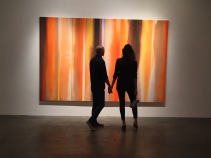







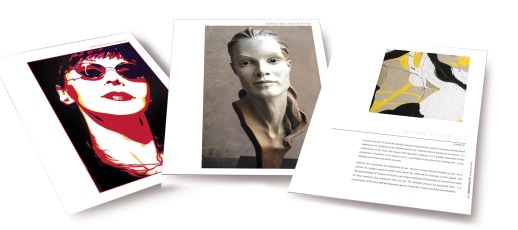
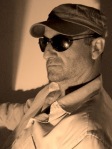 Susanne Kessler ( a sophisticated installation Artist from Germany ), Philip Geist, Ross Ashton ( brilliant Multimedia artists from Germany and Great Britain ) , Cliff Garten ( a California Public Artist with incredible visions) to name a few. These artists have something in common – they are absolutely brilliant! And inspirational!
Susanne Kessler ( a sophisticated installation Artist from Germany ), Philip Geist, Ross Ashton ( brilliant Multimedia artists from Germany and Great Britain ) , Cliff Garten ( a California Public Artist with incredible visions) to name a few. These artists have something in common – they are absolutely brilliant! And inspirational!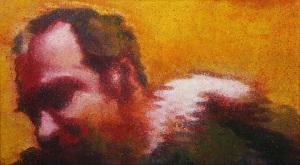 makes us think. Makes us relate to the people in the images. ” What are they thinking? What are they talking about…? “After these questions fade away , we discover that it does not really matter. What matters is – that these paintings have captured a moment in time – that will never happen again. The eternal ‘now” as the Zen philosophy points it. The only moment that actually exists.
makes us think. Makes us relate to the people in the images. ” What are they thinking? What are they talking about…? “After these questions fade away , we discover that it does not really matter. What matters is – that these paintings have captured a moment in time – that will never happen again. The eternal ‘now” as the Zen philosophy points it. The only moment that actually exists.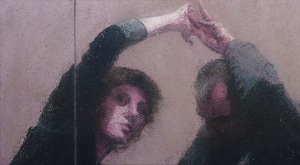 The Artist: “In my works I depict the characters by synthesizing multimedia images in a series of transitional transparencies. Their hands, faces, gestures and movements are in a state in which the conventional two-dimensions representational painting is replaced by the dynamic of the movement.”
The Artist: “In my works I depict the characters by synthesizing multimedia images in a series of transitional transparencies. Their hands, faces, gestures and movements are in a state in which the conventional two-dimensions representational painting is replaced by the dynamic of the movement.”



 Impeccable brushstroke – and emotion for detail. For the short time I was able to view the show – one other thing made an impression on me – very little sculpture. Almost nonexistent. Could it be that this means a Sculpture Art Show is in the making for 2014? Hmmm – Maybe next ART SHOW will have a special section exclusively for sculpture – Contemporary and Traditional Figurative…. In any case –
Impeccable brushstroke – and emotion for detail. For the short time I was able to view the show – one other thing made an impression on me – very little sculpture. Almost nonexistent. Could it be that this means a Sculpture Art Show is in the making for 2014? Hmmm – Maybe next ART SHOW will have a special section exclusively for sculpture – Contemporary and Traditional Figurative…. In any case – 










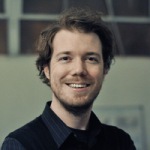








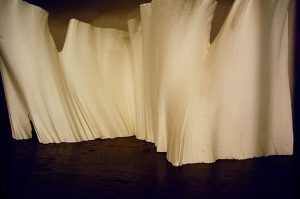





























Recent Comments